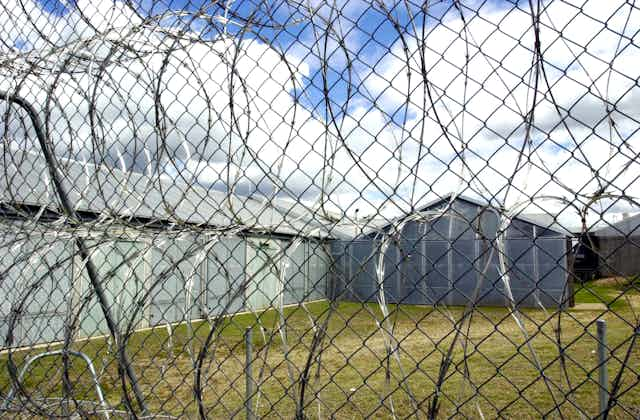Australia’s female prison population has skyrocketed over the last decade, and most female prisoners have experienced abuse before they get to jail. The way the prison system treats these women risks making their trauma worse, which may boost their risk of re-offending.
Why does this matter? Apart from the fact that re-traumatising abuse victims is wrong, prison is costly and it is in everyone’s best interests to treat – not worsen – underlying mental health issues among prisoners who will re-enter society when their sentence ends.
A growing problem
The first episode of a two-part documentary by SBS Insight on the experiences of female prisoners in a New South Wales maximum security jail illustrated what research confirms: women are typically incarcerated for drug-related offences, fraud and theft.
The causes of female offending behaviour differ significantly from those of males. Female prisoners are far more likely than men to have been victims of abuse, and this is a key risk factor in their offending and re-offending behaviour.
Up to 90% of female prisoners have experienced abuse in their lives. These experiences range from childhood abuse to sexual assault and intimate partner violence during adulthood. As a result, the majority of female prisoners suffer from complex trauma.
Aboriginal and Torres Strait Islander women are affected disproportionately.
The number of women being incarcerated increased by over 50% between 2005 and 2015. Aboriginal and Torres Strait Islander women make up around 30% of all incarcerated women in Australia.
The stories revealed on Insight told of trauma suffered by incarcerated women, many of whom have lives marked by domestic and community violence.
How can we address this problem? A body of research on “trauma-informed care” in prison offers a fresh approach.
What is trauma-informed care?
Trauma-informed care approaches acknowledge that the majority of prisoners have experienced at least one, if not multiple, traumatic life events. This approach is especially appropriate for high risk and highly vulnerable people.
Trauma-informed care emphasises the importance of two key areas:
- the types of services being delivered to prisoners (such as counselling or interventions to address substance misuse);
- and the environment these services are delivered in.
Having an environment that is warm and welcoming rather than sterile and intimidating is a core feature of trauma-informed care. Prisons, by default, tend toward the latter.
Reinforcing trauma
Security procedures like strip searches and pat downs – often carried out or supervised by male officers – can re-traumatise female prisoners who have experienced abuse in the past.
The prison system generally does not address the mental health issues of many women in jail. This is a problem, because for many women, mental health issues are closely linked to substance abuse. And while drug and alcohol issues are being addressed through relevant programs in many prisons, the long-term effects are often limited because the underlying causes remain untouched.
Female prisoners often experience significant loss and grief as a result of being incarcerated. Many female prisoners have dependent children in their care prior to incarceration, especially when sentenced to prison for the first time. While some women may be able to make alternative care arrangements for their children, many experience further trauma and loss when they lose custody of their children.
Aboriginal and Torres Strait Islander women are also affected by the loss of cultural ties, when they’re removed from their kin and connections to land.
Creating spaces and facilities that allow women to maintain a connection to country and kinship is an important part of reducing the trauma suffered by Indigenous female prisoners.
Trauma and recidivism
The level of complex trauma experienced by the vast majority of incarcerated women contributes to their risk of re-offending. While women on average serve significantly shorter sentences than male offenders, they tend to have a higher recidivism rates.
When a woman leaves prison, it is important she be offered holistic and culturally- appropriate services to support her re-entry into society.
If complex trauma is left unaddressed, women remain at increased risk of self-medicating, substance abuse, unemployment, mental illness and family breakdown.
Making prisons trauma-informed
It’s understandable that certain security measures, such as strip searches, are not expendable in prison settings. But we can look at how they’re performed. For example, a strip search conducted in a space that offers privacy and security would be less likely to re-traumatise a female prisoner than one conducted in full view of other officers or inmates.
Public awareness and acceptance plays a significant role in establishing trauma-informed care as a core feature of prison settings. Media reports often suggest that humane prison models fail to make inmates suffer for their wrongdoings and that this is a problem. In fact, other countries have found that providing humane prison conditions does not increase recidivism rates. If anything, it achieves the opposite.
Until the public is willing to support the idea of prisons as an opportunity for rehabilitation rather than simply punishment, trauma-informed care will struggle to find its place, and incarceration rates will continue to rise.

